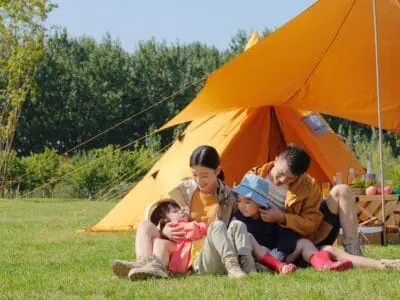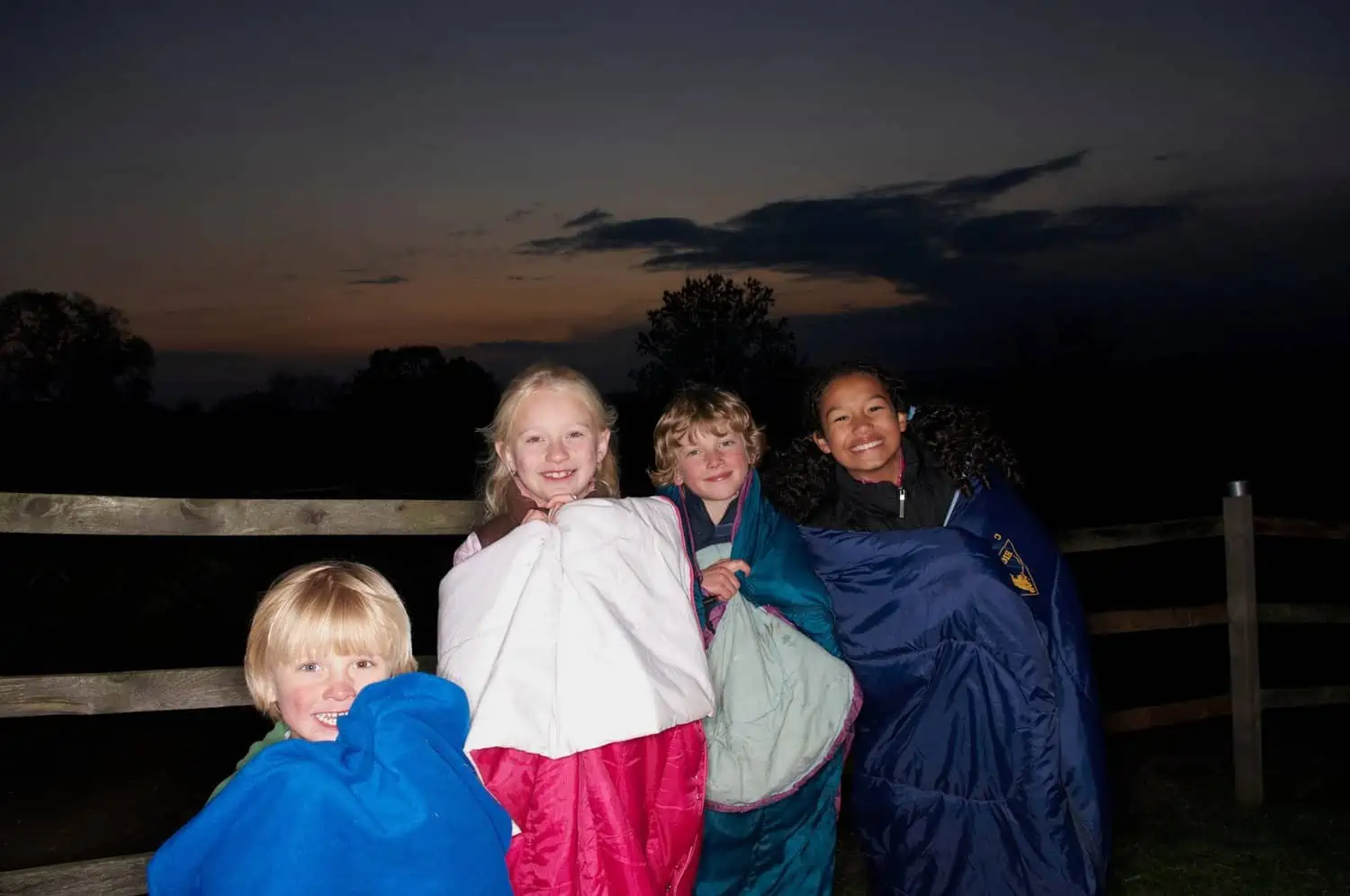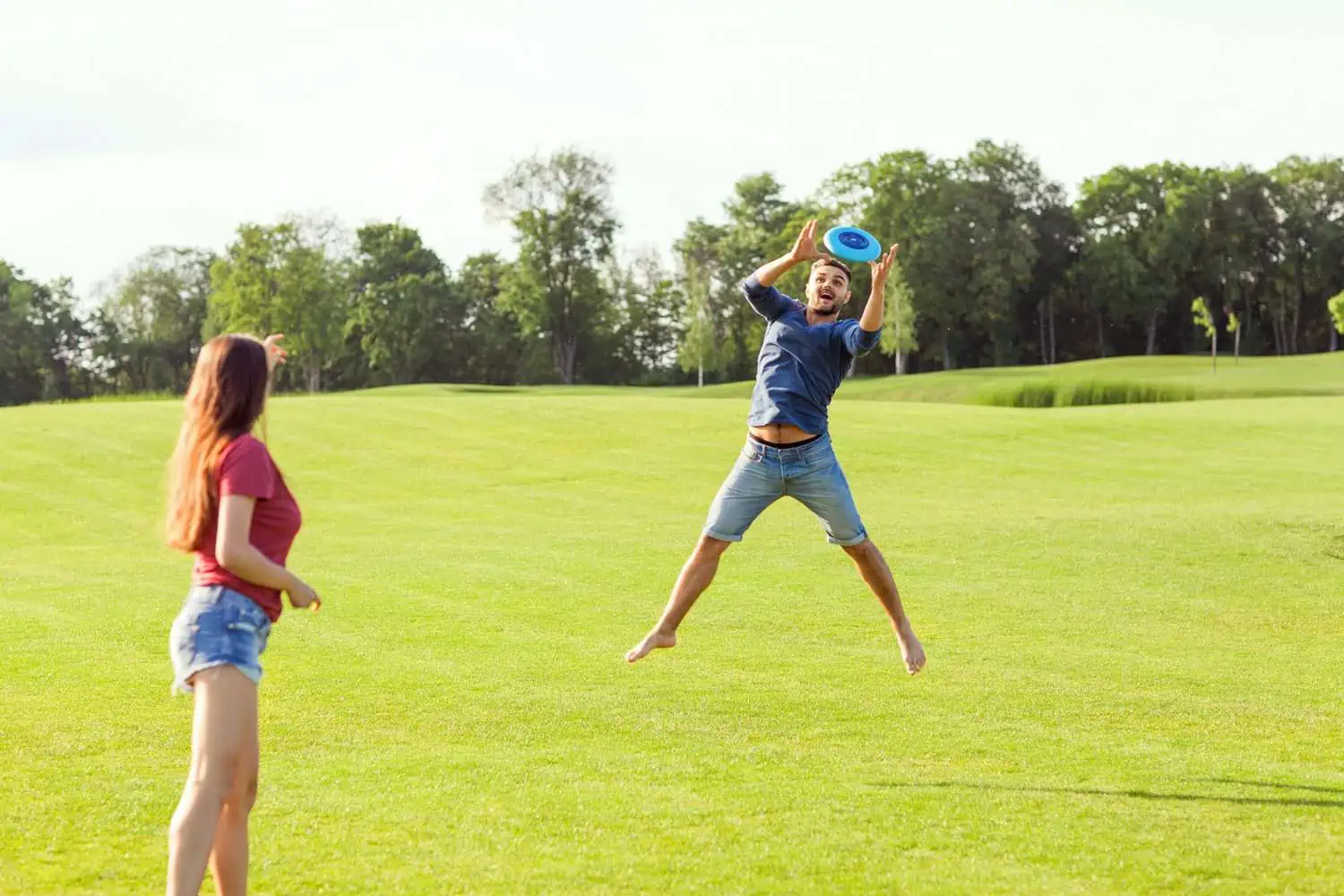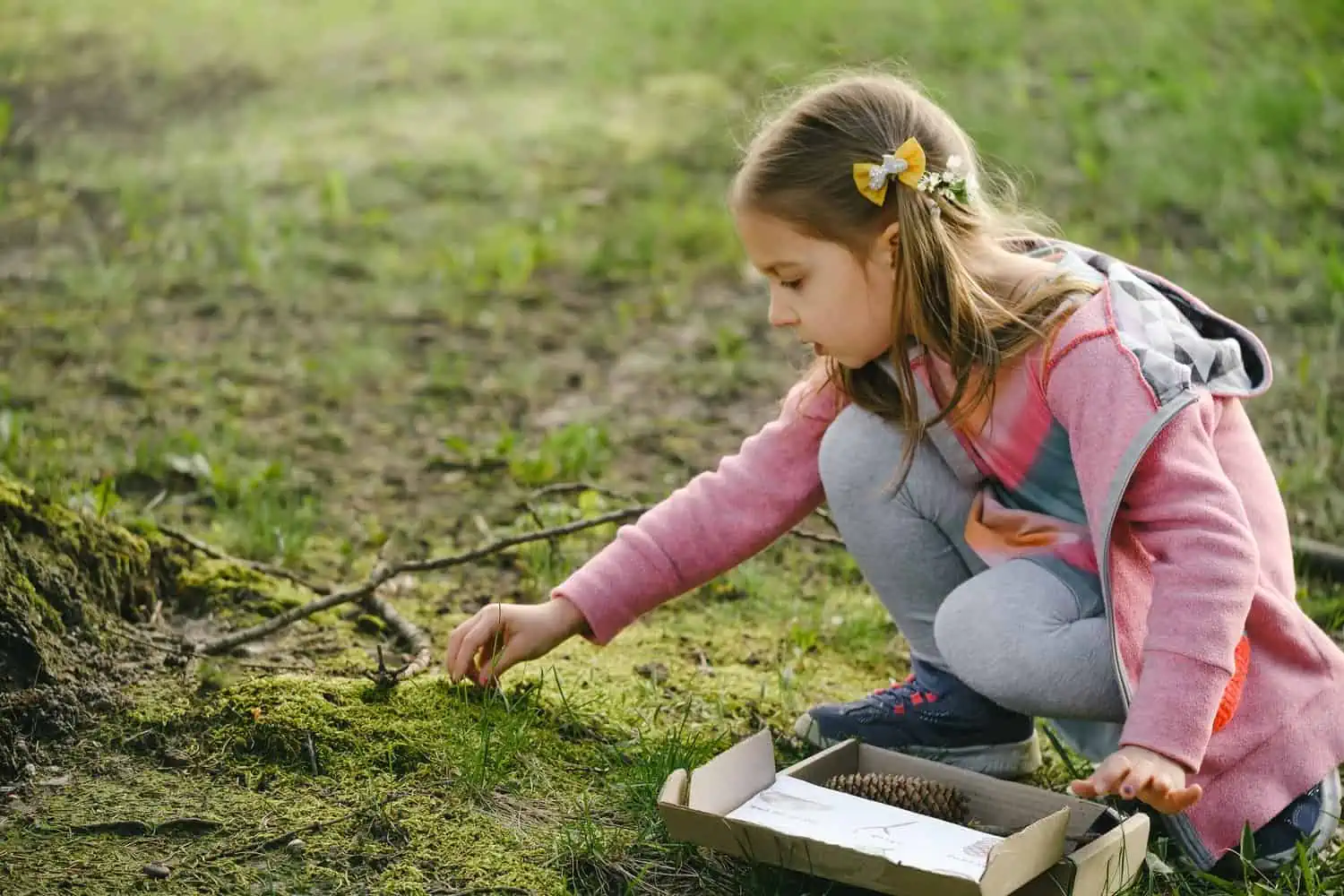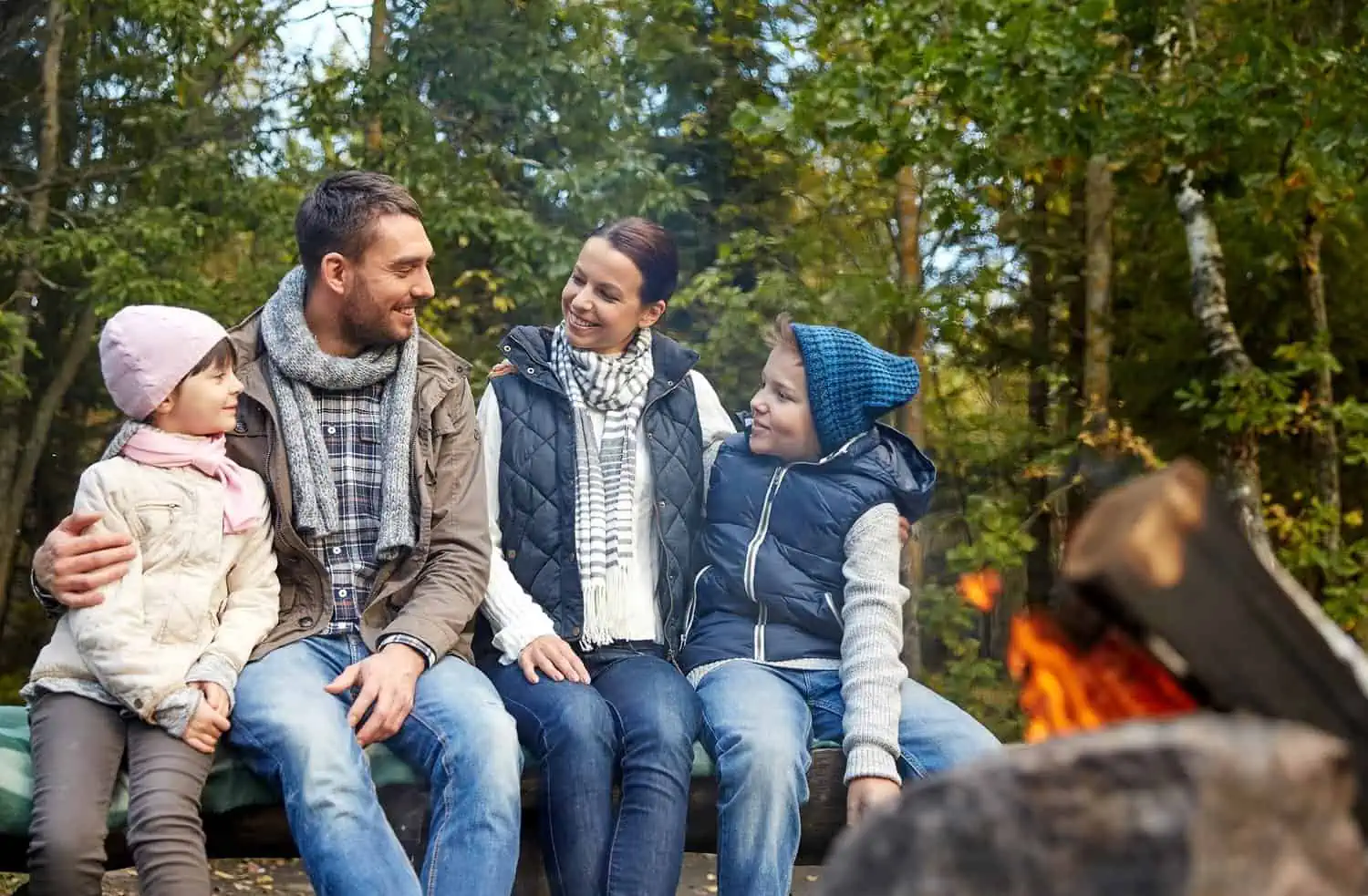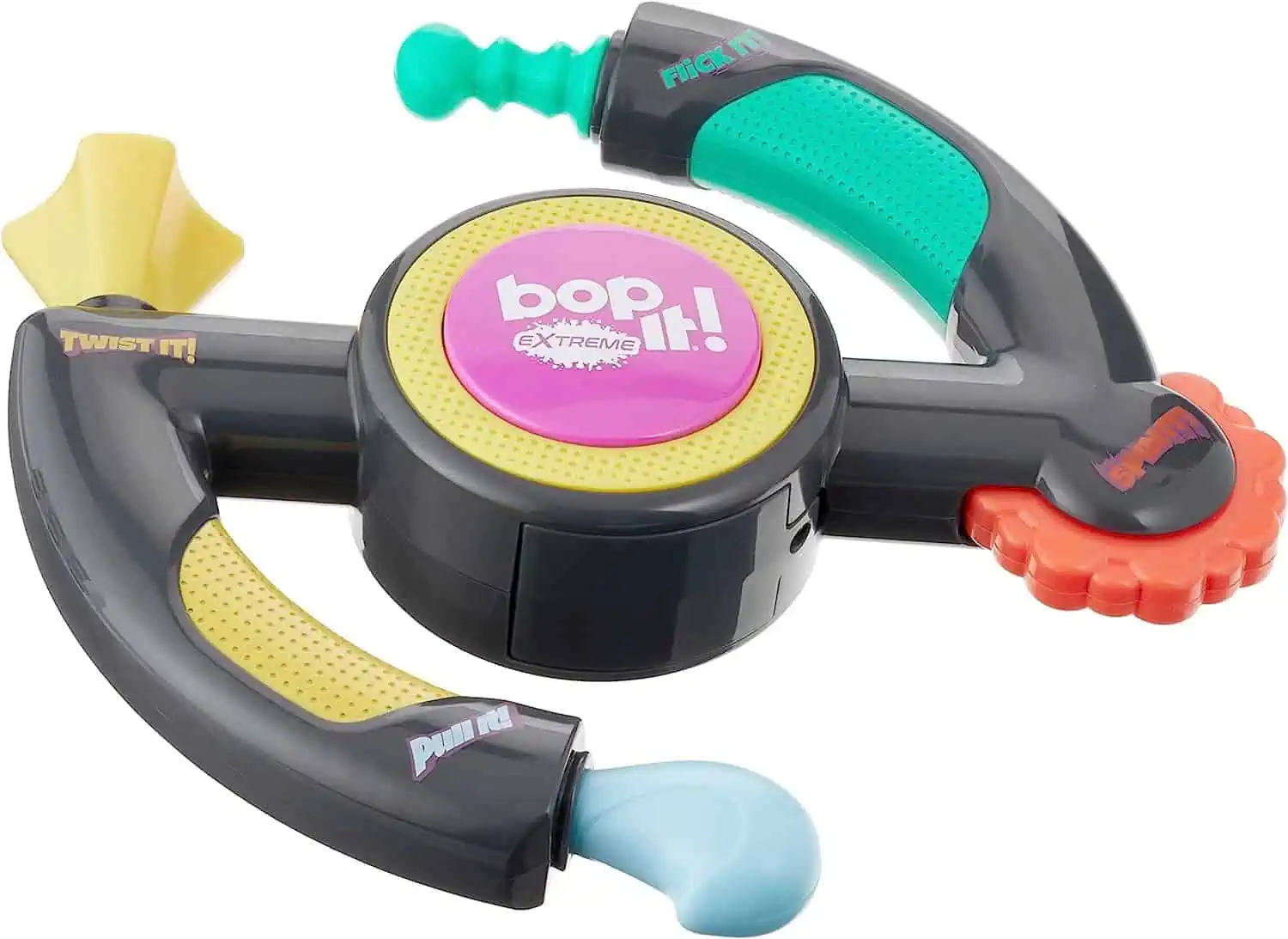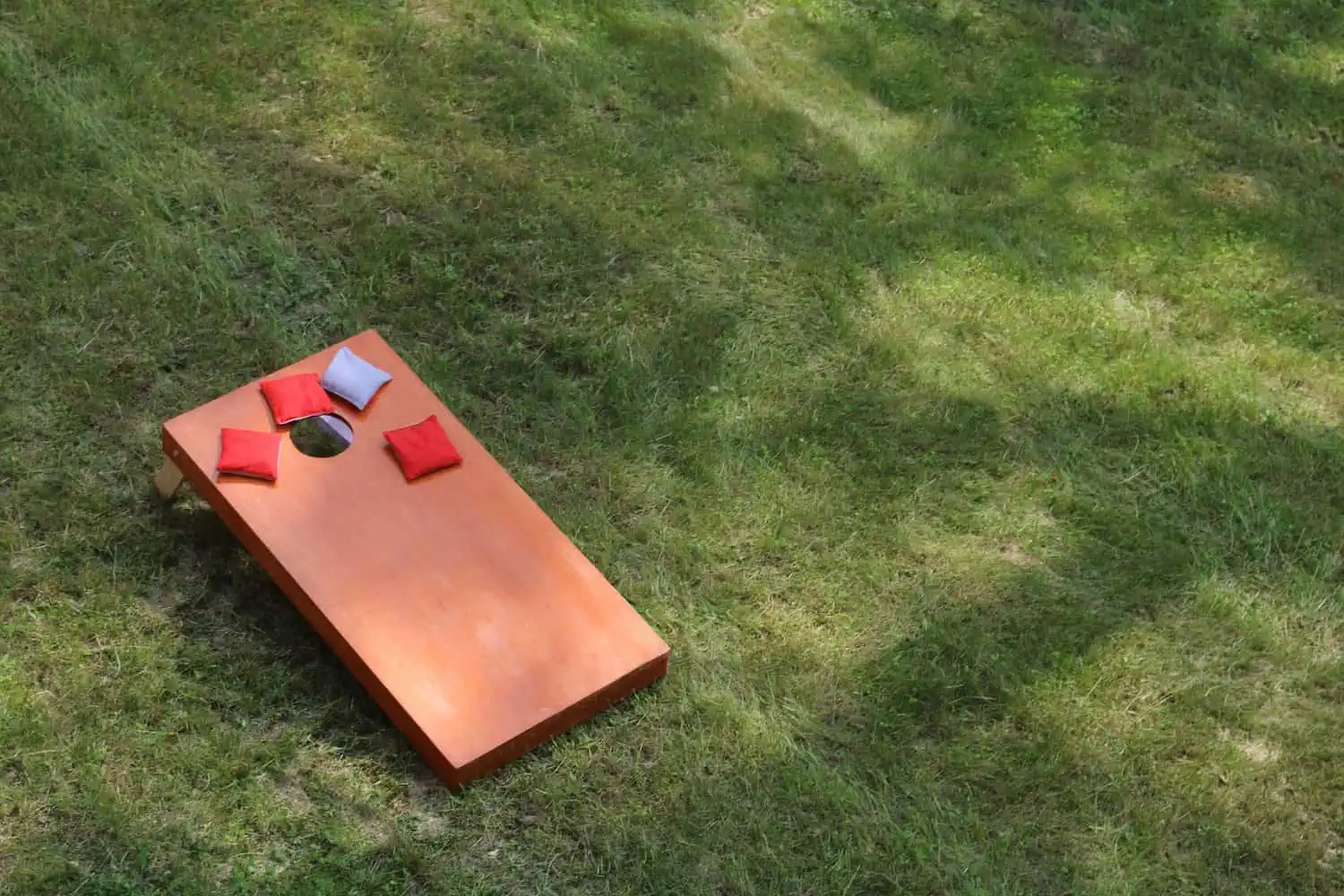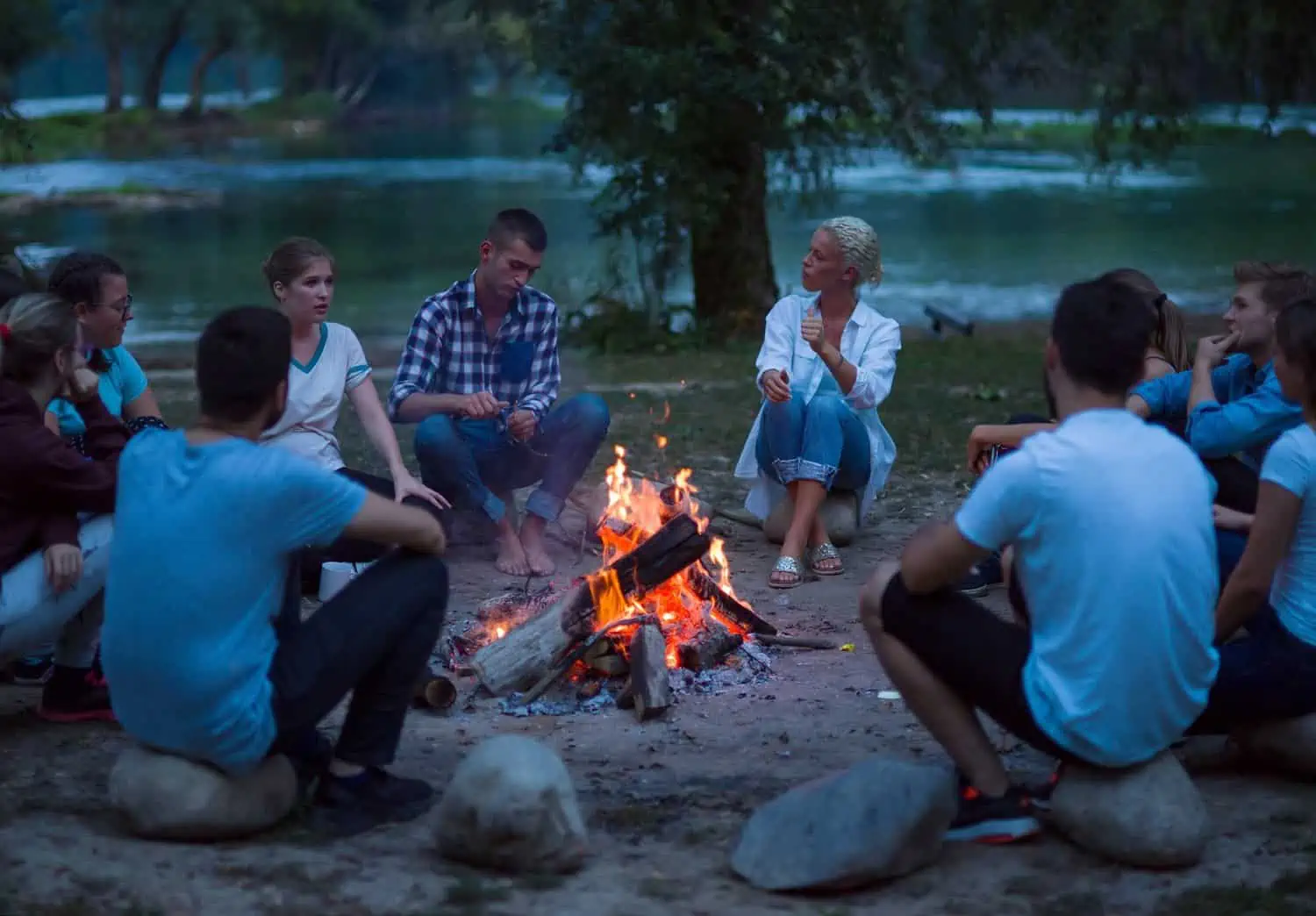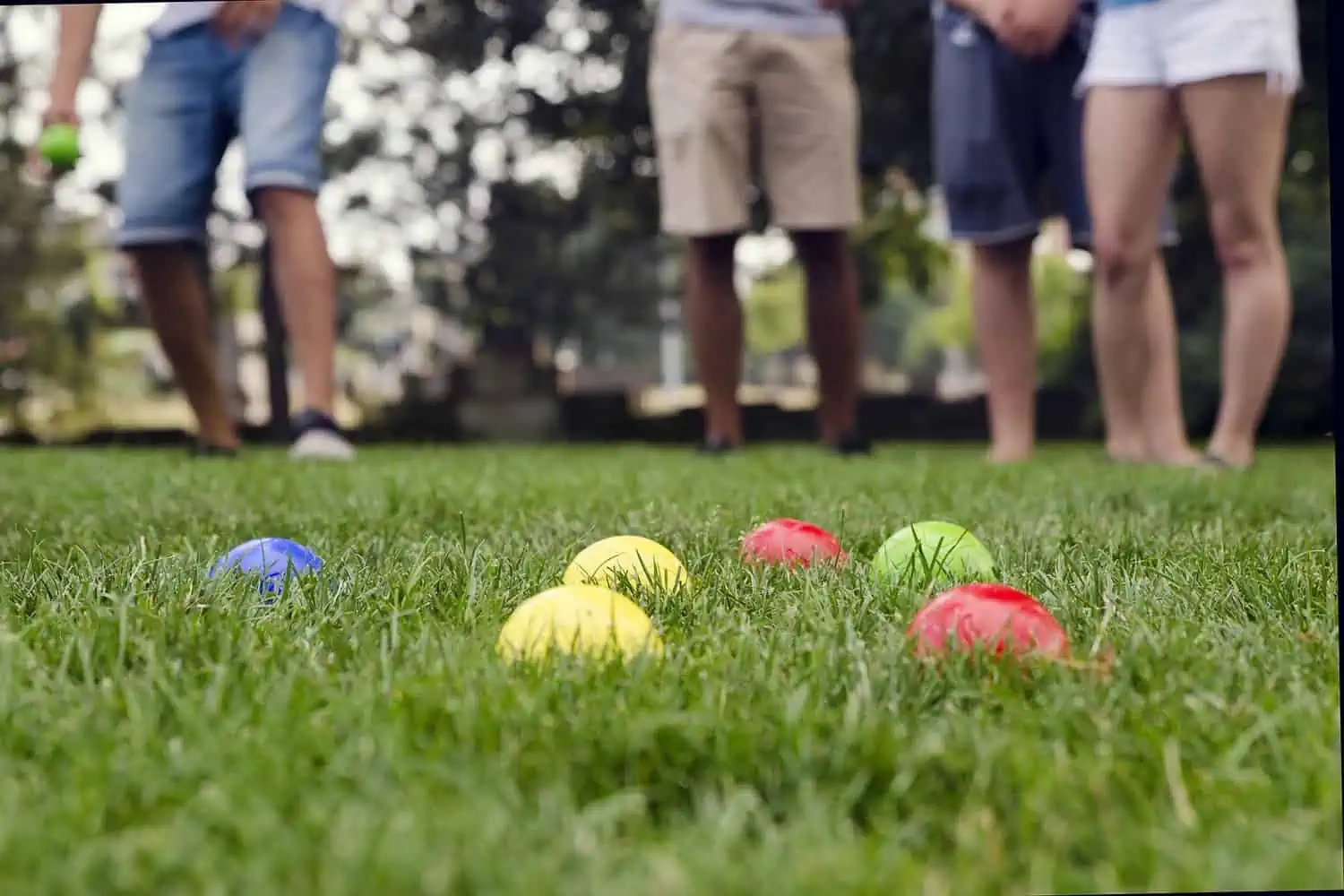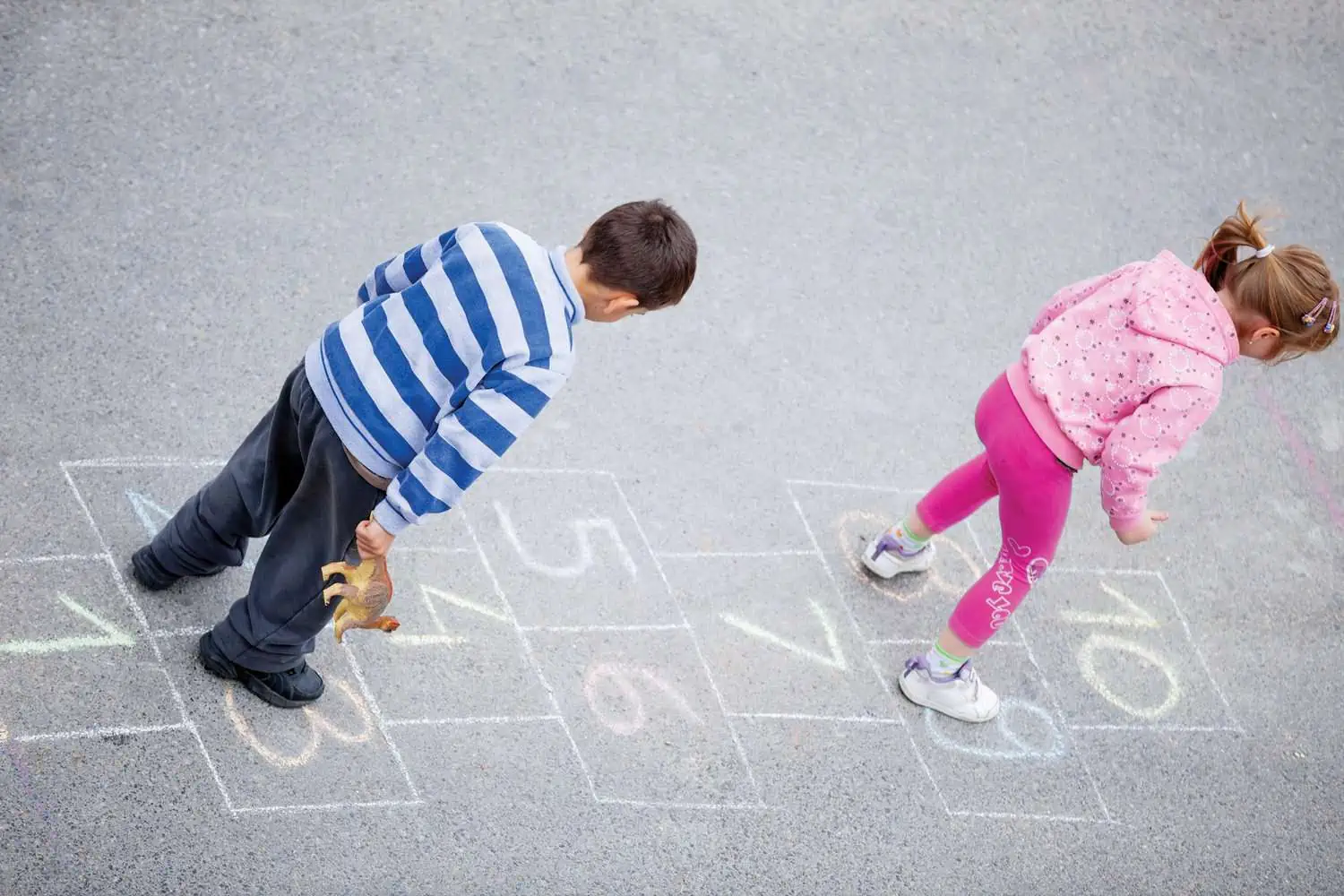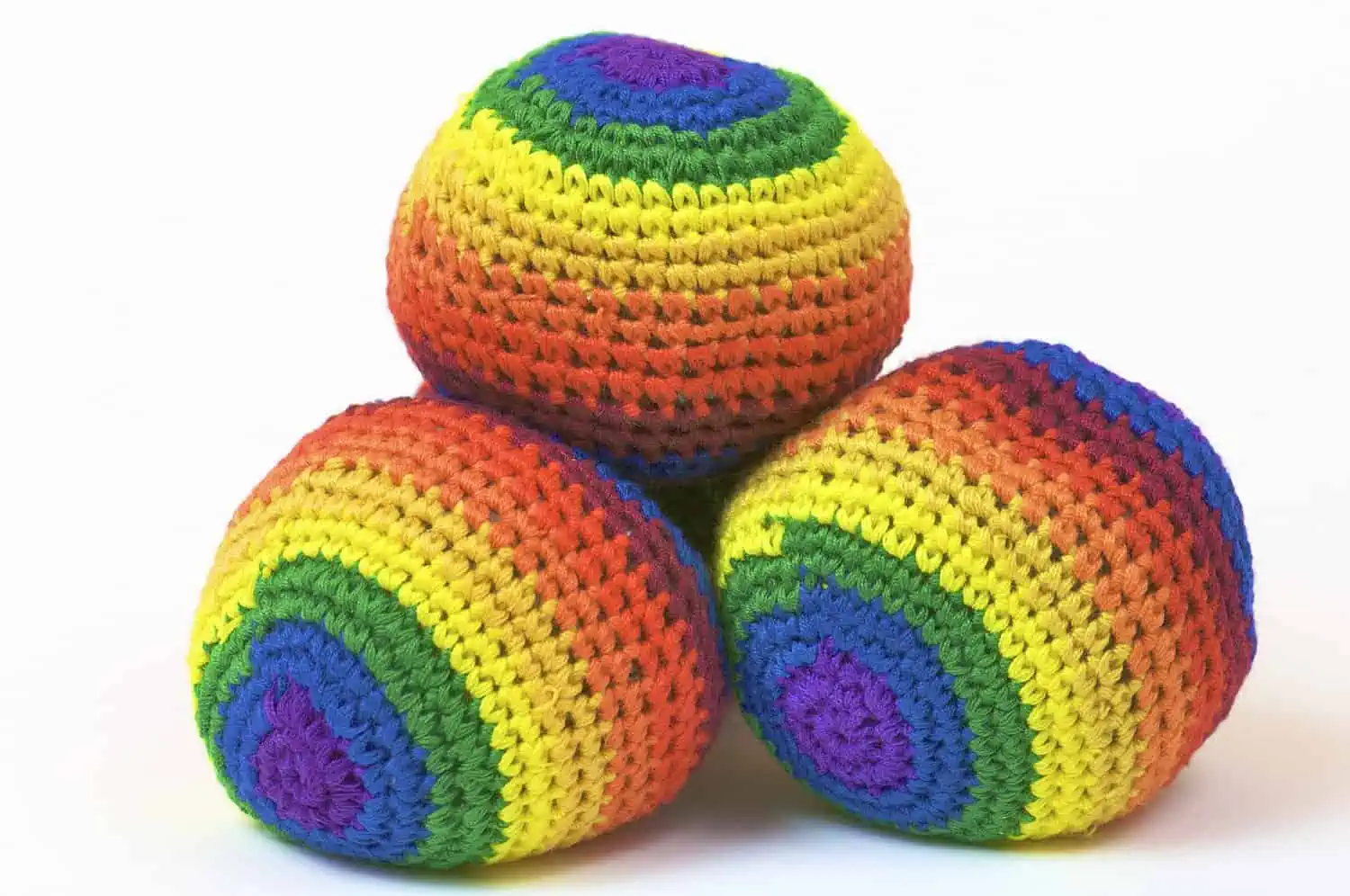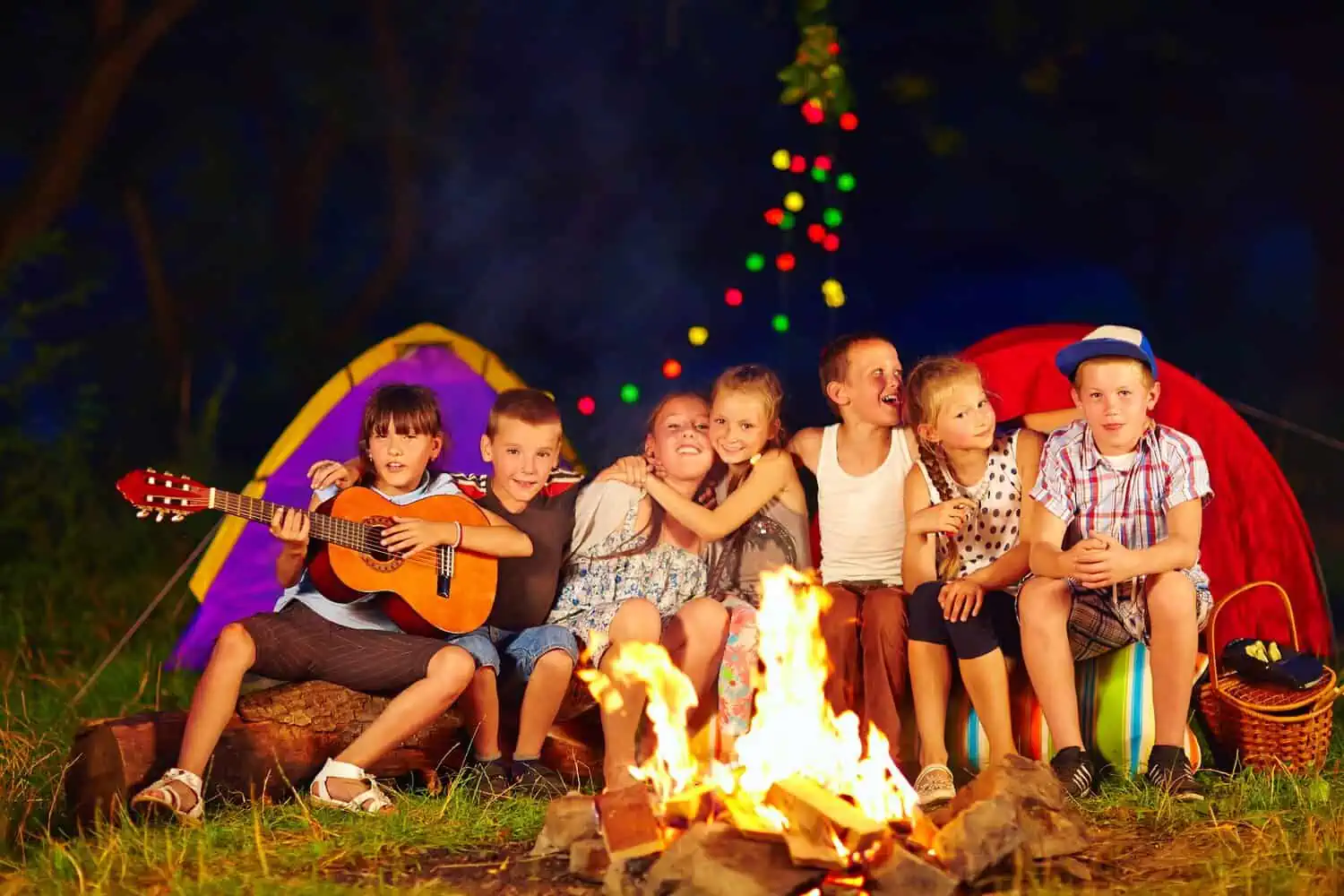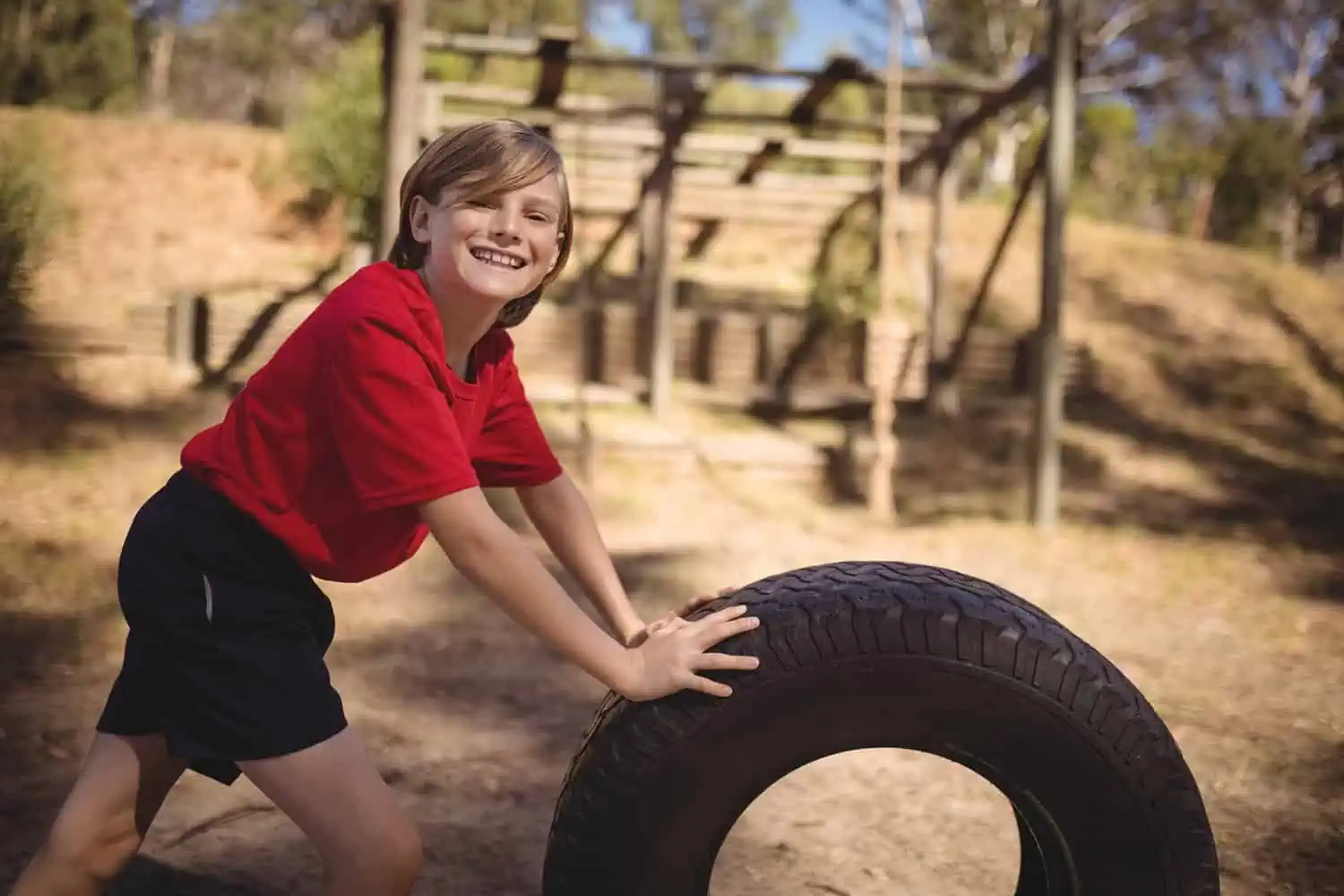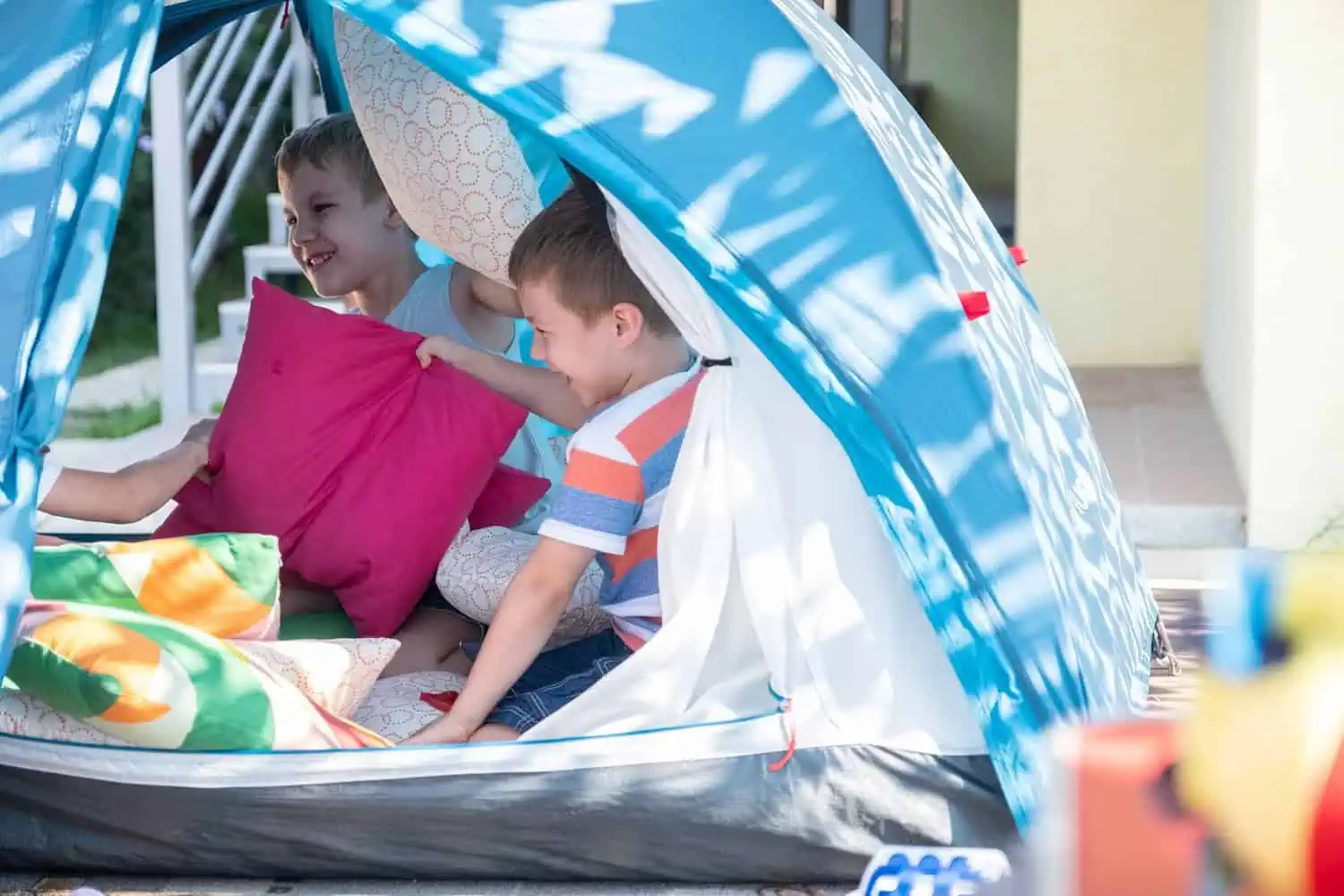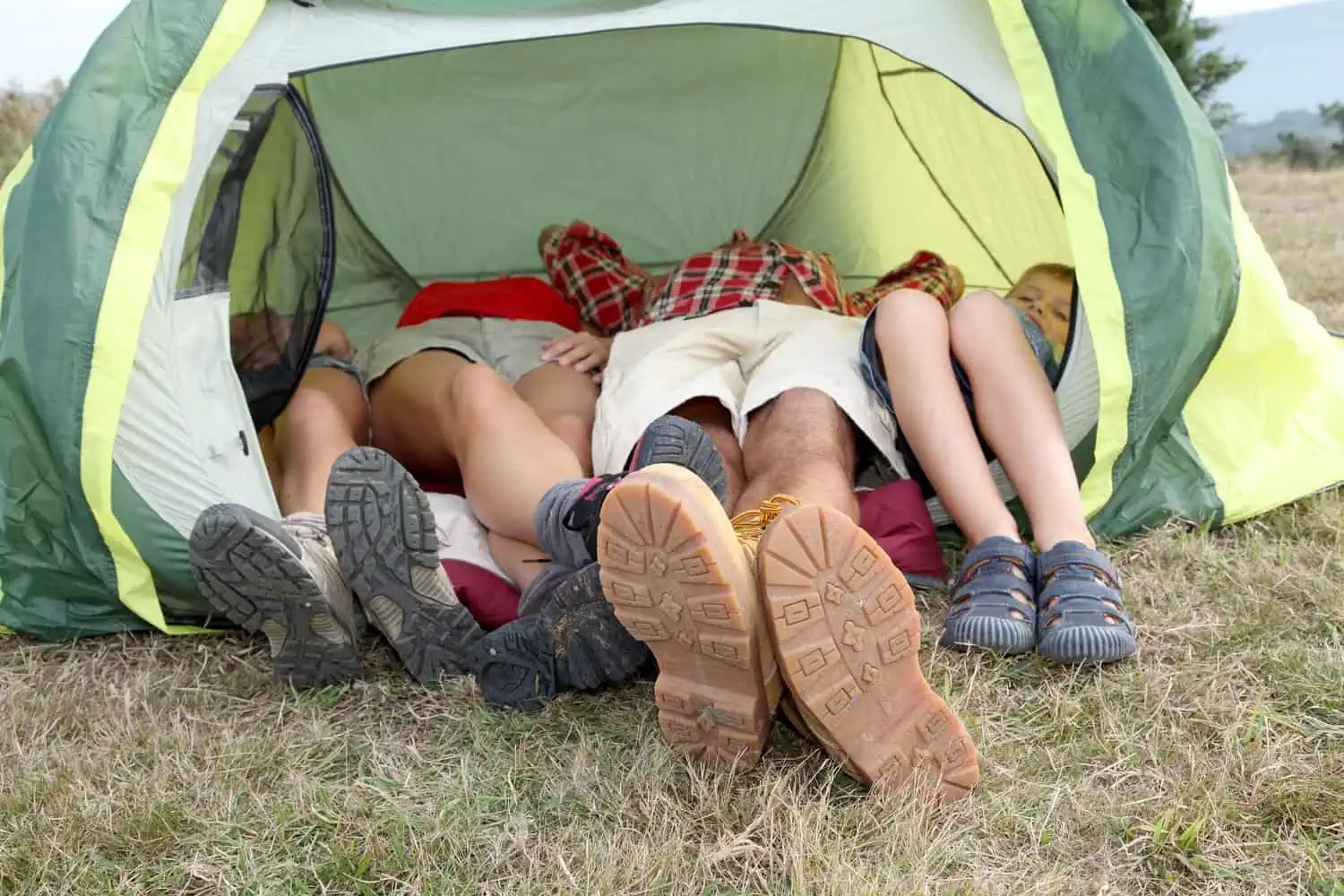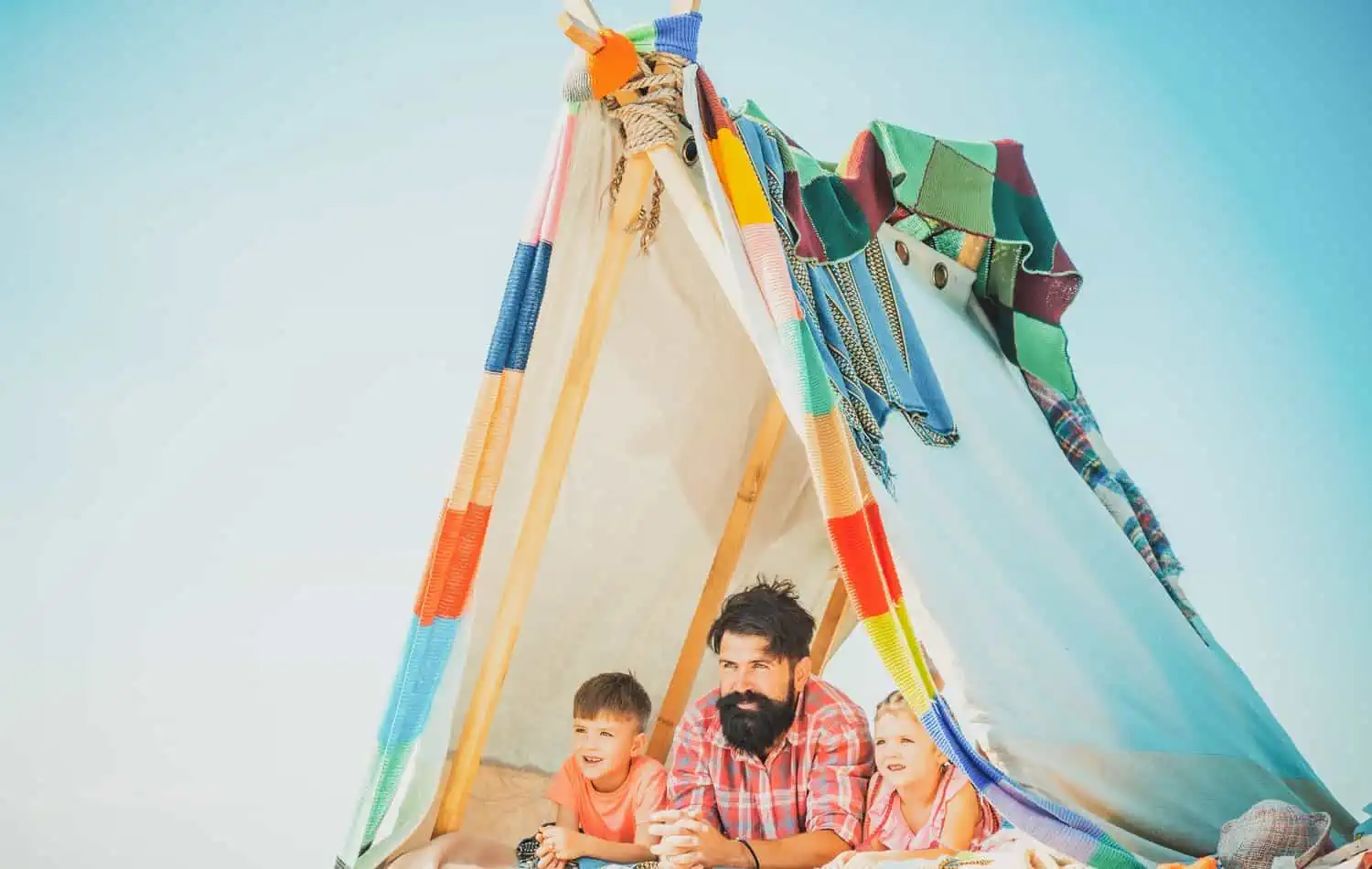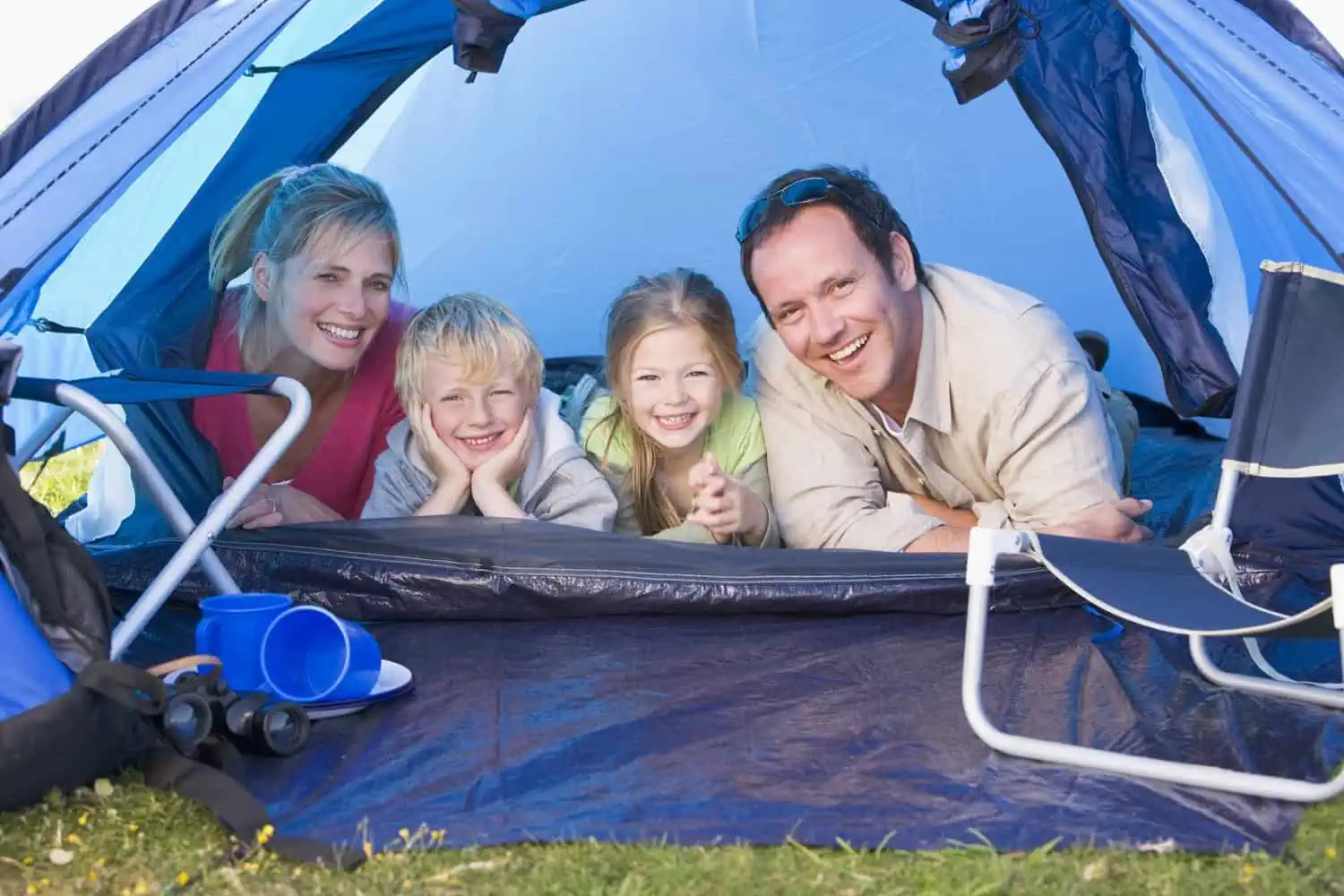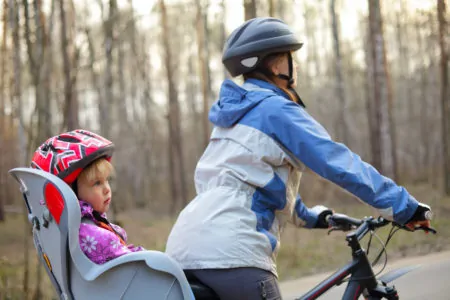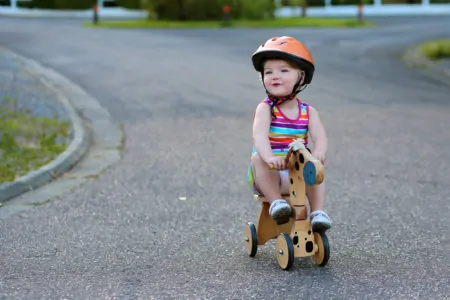You have the s’mores, the tent, and the sleeping bags packed. But do you have the entertainment? Even in the great outdoors, boredom can strike fast. If you are scrambling for family camping games to keep the crew happy, you have come to the right place.
I have spent countless nights under the stars, and I’ve compiled a list of the absolute best camping activities for kids, teens, and adults. From high-energy outdoor field games to cozy activities inside the tent, these 37 ideas will turn downtime into memorable traditions.
These are the games your family will talk about for years. You might even find yourself passing them down to the next generation of campers.
Key Takeaways
- Use your surroundings: The best games often require zero equipment; sticks, stones, and shadows work perfectly.
- Prepare for rain: Always have a few “tent-friendly” card games or word games ready for unexpected downpours.
- Adapt for age gaps: Modify rules (like head-starts or team pairing) so toddlers and teens can play together.
- Safety first: Set boundaries for night games and outdoor play to keep everyone safe near the campfire or woods.
Classic Camping Games for Everyone
Camping has been a beloved tradition for over a century, and the games we play are a huge part of that history. I have curated a list of 12 classic games that bridge the gap between toddlers and grandparents. Whether you need a quick distraction or an evening event, these activities deliver.
1. Potato Sack Races
You probably didn’t pack burlap sacks, but you definitely have sleeping bags. This race is hilarious, chaotic, and a great way to burn off energy before bed. Just be gentle with the zippers!
How To Play
- Set the course: Pick a start and finish line on soft grass or dirt. Avoid rocks or roots.
- Bag up: Hop inside your sleeping bag and pull it up to your waist. Grip the material tightly so it doesn’t slip.
- Hop to it: On “Go,” hop as fast as you can to the finish line. Falling over is part of the fun; just get back up and keep hopping.
Who Can Play
This is best for kids ages three and up. To keep it fair, race similar age groups together, or have adults hop on their knees (if they dare).
2. Truth or Dare
You don’t need any equipment for this campfire staple. It is a fantastic way to learn funny secrets or watch your family do ridiculous stunts. Keep the truth questions light and the dares safe for the campsite.
How To Play
- Pick a victim: The first player asks someone, “Truth or dare?”
- Make a choice: The chosen player picks their poison.
- The challenge: If they pick Truth, ask something like, “Have you ever peed in a pool?” If they pick Dare, challenge them to howl like a wolf or do a crab walk.
- Pass it on: Once completed, the turn passes to the person who just performed the truth or dare.
Who Can Play
Ideally ages three and up. Parents, get ready to be embarrassed by your kids’ brutal honesty!
3. Frisbee
A frisbee is the ultimate portable camping toy. It slides easily into a backpack and provides hours of casual fun or intense competition.
How To Play
- Basic Catch: Simply stand apart and toss the disc back and forth. Count how many consecutive catches you can make.
- Ultimate Frisbee: If you have a group, set up end zones. Pass the frisbee to teammates to advance down the field. You score by catching it in the opponent’s end zone.
- Disc Golf: Pick a tree or a specific rock as a “hole” and see who can hit it in the fewest throws.
Try This
Play “Monkey in the Middle” with the frisbee if you have three players. It is a great workout for the person in the center!
Who Can Play
Basic tossing is great for ages two and up. Team games work best for ages eight and older who have better hand-eye coordination.
4. Scavenger Hunt
When you need to set up camp and keep the kids distracted, a scavenger hunt is your best friend. It engages their curiosity and encourages them to explore nature safely.
How To Play
- Create the list: Scribble down nature items to find: a pinecone, a smooth rock, a yellow leaf, something fuzzy, or a Y-shaped stick.
- Set boundaries: Tell the kids clearly where they can and cannot go (e.g., “Don’t go past the big oak tree”).
- Go hunting: Send them off! You can have them bring items back or just check them off a list to leave nature undisturbed.
- The reveal: Review what everyone found. The first to complete the list gets the first s’more!
Who Can Play
Toddlers to pre-teens (ages 3-12). Pair younger kids with older siblings for a cooperative team effort.
5. 20 Questions
This logic game is perfect for the car ride, hiking trail, or tent. We used to play for hours, and it’s a sneaky way to build critical thinking skills without anyone realizing it.
How To Play
- The Thinker: One person thinks of a person, place, or thing.
- The Guessers: Everyone else takes turns asking “Yes” or “No” questions. (e.g., “Is it alive?” or “Is it bigger than a breadbox?”).
- The Count: Keep track of the questions. If the group guesses correctly within 20 questions, they win. If not, the Thinker wins.
Who Can Play
Great for ages five and up. Younger kids can play, but they often choose objects that are right in front of them!
6. Bop It
If you have a Bop It console, bring it along. It’s loud, fast-paced, and addictive. It works perfectly around the fire or huddled inside a tent on a rainy afternoon.
How To Play
- Listen up: The game shouts commands like “Twist it,” “Pull it,” or “Bop it.”
- React fast: Perform the action immediately. As you progress, the tempo speeds up.
- Pass it on: In multiplayer mode, the game will tell you when to pass the unit to the next player. If you mess up, you’re out!
Who Can Play
Recommended for ages eight and up, though coordinated six-year-olds often dominate this game.
7. Bean Bag Toss (Cornhole)
Also known as Cornhole, this is the king of campsite chill. I recommend a collapsible fabric set to save precious trunk space.
How To Play
- Teams: Divide into two teams. Stand at opposite ends of the boards.
- Toss: Take turns throwing bean bags at the target board.
- Score: A bag in the hole is 3 points; a bag on the board is 1 point.
- Win: Tally scores after each round. First team to 21 wins.
Who Can Play
Anyone who can lift a bean bag! Seriously, toddlers love this just as much as competitive dads.
8. Mafia
For a spooky vibe around the campfire, Mafia is unbeatable. It is a game of deduction, lying, and mystery. All you need is a deck of cards to assign roles.
How To Play
- Assign roles: Use a King for the Detective, Queen for the Doctor, Aces for the Mafia, and number cards for Townspeople. Deal one card to each player secretly.
- Night falls: The Narrator tells everyone to sleep (close eyes).
- Mafia strikes: The Mafia wakes up, silently points to a victim to “eliminate,” and goes back to sleep.
- Special roles: The Doctor wakes up to save one person. The Detective wakes up to guess one Mafia member.
- Day breaks: Everyone wakes up. The Narrator reveals who was eliminated (unless the Doctor saved them).
- The Trial: The town discusses who they suspect is the Mafia. Players vote to eliminate a suspect.
- Repeat: The cycle continues until the Mafia is gone or they outnumber the Townspeople.
Top Tip
For younger kids, replace “eliminate” with “stealing cookies” to keep the theme lighthearted.
Who Can Play
Best for ages 10 and up. It requires patience and the ability to keep a poker face.
9. Bocce Ball
Bocce is a leisurely game that works on almost any terrain (grass, dirt, or sand). It requires a steady hand and a bit of strategy.
How To Play
- The Pallino: Toss the small target ball (the pallino) into the play area.
- The Approach: Teams take turns throwing their larger heavy balls, trying to get as close to the pallino as possible.
- Knockout: You can knock your opponent’s ball away or knock the pallino closer to your own balls.
- Scoring: Only the team closest to the pallino scores points for that round.
Who Can Play
Standard bocce balls are heavy, so I suggest this for ages 10+. For younger kids, grab a soft rubber set or lighted set for night play.
10. Telephone
A quiet game that always ends in loud laughter. It illustrates perfectly how rumors start!
How To Play
- The Secret: The first player whispers a complex sentence to the person on their right. (e.g., “The purple badger ate six sour pickles on Sunday.”)
- Pass it on: Each person whispers what they thought they heard to the next person. You only get to say it once!
- The Reveal: The last person says the phrase out loud. Compare it to the original for hilarity.
Who Can Play
Fun for ages four and up. It’s a great way to calm things down around the fire.
11. Water Balloon Fight
On a scorching July afternoon, nothing beats a water balloon war. Bring rapid-fill balloons to save time tying knots.
How To Play
- Prep: Fill buckets with balloons. Divide into teams.
- Battle: shout “Go!” and start throwing. Aim for legs and torsos, never faces.
- Cleanup: This is critical. You must pick up every piece of broken latex to protect wildlife. Make it a game: whoever collects the most trash gets a prize.
Who Can Play
Everyone! Just be gentle with the little ones.
12. Hopscotch
If you are camping on a paved pad or near a sidewalk, chalk is essential. If you are on dirt, just scratch the grid into the ground with a stick.
How To Play
- Draw the grid: Number squares 1 through 10.
- Toss a marker: Throw a stone or pinecone into square 1.
- Hop: Hop over the square with the stone, continue through the course, turn around, and pick up the stone on your way back.
- Next level: Throw the stone to square 2 and repeat. If you touch a line or lose balance, your turn ends.
Who Can Play
Ideally ages 4-10. It’s a great solo game if a child needs some independent play time.
Camping Games To Play Outdoors
When the weather cooperates, you want the family breathing fresh air and moving their bodies. Here are 13 games designed for the great outdoors.
1. Ladder Ball
Also called “Ladder Golf,” this game is strangely satisfying. It involves throwing bolas (two balls connected by a string) at a tiered ladder structure.
How To Play
- Positioning: Stand about 15 feet back from the ladder.
- Tossing: Throw your three bolas, trying to wrap them around the rungs.
- Scoring: Top rung is 3 points, middle is 2, bottom is 1. You can knock your opponent’s bolas off to steal their points.
- Winning: First to exactly 21 points wins.
Who Can Play
Ages four and up. It’s safe, simple, and very competitive.
2. Kan Jam
Kan Jam is like frisbee on steroids. It requires teamwork and precision, and it gets loud!
How To Play
- Setup: Place two “Kans” (slots facing each other) 50 feet apart. Partners stand at opposite cans.
- Throw & Deflect: Player A throws the disc. Player B can slap or deflect the disc to help it hit or enter the Kan.
- Points: 1 point for a deflection hit, 2 points for a direct hit, 3 points for a deflection into the slot.
- Instant Win: If the thrower lands the disc in the slot unassisted, they win the game instantly.
Who Can Play
Best for ages 10+. The discs fly fast, so keep small children away from the line of fire.
3. Hacky Sack
A hacky sack takes up zero space in your bag but provides hours of entertainment. It’s the ultimate “I’m bored” cure.
How To Play
- Circle up: Stand in a small circle.
- Kick it: Toss the sack up and use your feet, knees, or chest to keep it off the ground. Pass it to others in the circle.
- Team Goal: Count how many touches you can get as a group before it hits the dirt. Try to beat your record.
Who Can Play
Coordination is key here, so ages eight and up usually enjoy it most. Younger kids can just practice kicking it up to themselves.
4. Name That Song
A musical campfire game that requires no instruments, just your voice (or lack thereof).
How To Play
- The Performer: One person hums the melody of a popular song. No lyrics allowed!
- The Audience: Everyone guesses the song title.
- The Winner: The first person to guess correctly becomes the next hummer.
Who Can Play
Toddlers to great-grandparents. It is especially cute when little ones hum nursery rhymes.
5. Nature Obstacle Course
Turn the campsite into a ninja warrior training ground using what you have.
How To Play
- Build it: Create stations. Jump over a log, circle the fire pit three times, crawl under the picnic table, and balance on a sleeping bag.
- Time it: Use a stopwatch to time each child.
- Race: See who can complete the course the fastest without touching the “lava” (ground) in certain zones.
Who Can Play
Ages 3-15. Make it harder for older kids by adding balance challenges or carrying a “sacred object” (like a full cup of water) they can’t spill.
6. Nature Tic-Tac-Toe
Leave the paper at home. This version uses the earth itself.
How To Play
- The Board: Scratch a hashtag (#) grid into the dirt with a stick.
- The Pieces: Player X collects four pinecones; Player O collects four stones.
- Play: Standard rules apply. Three in a row wins.
Who Can Play
Ages three and up. It’s a great quiet game for early risers.
7. Horseshoes
Many established campgrounds have horseshoe pits, but you can bring your own portable set just in case.
How To Play
- Pitch: Throw the horseshoe toward the stake at the other end.
- Score: A “Ringer” (encircling the stake) is 3 points. Landing within 6 inches is 1 point.
- Win: First to 21 points takes the crown.
Who Can Play
Use rubber horseshoes for kids under 12 to prevent injuries.
8. Flashlight Tag
The sun going down doesn’t mean the fun stops. This hybrid of Hide-and-Seek and Tag is thrilling for older kids.
- The “IT” person: Equipped with a flashlight, they count to 30 at “base.”
- Hide: Everyone else hides in the dark.
- Tag: The seeker catches people by shining the light on them and calling out their name.
- Jail: Caught players go to “jail” until the next round.
Who Can Play
Ages six and up. Safety Note: Ensure the play area is free of tripping hazards like tent stakes or fire pits!
9. Kickball
If you have a large group or make friends with the neighbors, kickball is a blast. You just need a rubber ball and four “bases” (trees or backpacks work fine).
How To Play
- The Diamond: Set up a baseball-style diamond.
- Roll & Kick: The pitcher rolls the ball; the batter kicks it and runs.
- Outs: You are out if the ball is caught in the air, or if you are tagged with the ball while running.
Who Can Play
Great for mixed ages (5+). It’s less skill-intensive than baseball, so everyone can contribute.
10. In the Pond, Out of the Pond
A simple reaction game that requires focus.
How To Play
- The Line: Draw a line in the dirt. One side is the “Pond,” the other is the “Bank.”
- The Caller: One person yells commands: “In the pond!” (jump forward) or “On the bank!” (jump back).
- Tricks: The caller can try to trick players by repeating the same command twice or saying “In the Bank” (which isn’t a place!). If you jump at the wrong time, you’re out.
Who Can Play
Ages four and up. It’s hilarious to watch adults get confused and jump the wrong way.
11. Pass the Water
A cooling game for hot days where everyone gets soaked.
How To Play
- Line up: Stand single file. Give everyone a cup.
- Fill up: The person at the front fills their cup with water.
- Pour back: Without looking, they dump the water over their head backward, trying to land it in the cup of the person behind them.
- Continue: Keep going down the line. Measure how much water is left in the final cup!
Who Can Play
Ages three and up. Expect to get wet!
12. Duck Duck Bear
It’s Duck Duck Goose, but with a camping twist.
How To Play
- Circle: Sit in a circle. One player walks around tapping heads saying “Duck.”
- Roar: Instead of “Goose,” they yell “Bear!” and growl.
- Chase: The “Bear” chases the tapper around the circle. If the tapper steals the Bear’s seat, the Bear becomes the new tapper.
Who Can Play
Toddlers through elementary age.
13. Capture the Flag
This is the ultimate large-group camping game. It uses the entire campsite and involves strategy, stealth, and sprinting.
How To Play
- Territories: Split the play area in half. Hide a “flag” (bandana or t-shirt) in each team’s territory.
- Infiltrate: Teams try to sneak into the enemy side, grab the flag, and run it back to their side.
- Jail: If you are tagged on enemy soil, you go to “jail” until a teammate tags you out.
Who Can Play
Best for ages eight and up. It is an intense game that can last for hours!
Camping Games To Play in a Tent
Rain happens. But a storm doesn’t have to ruin the trip. Here are 12 games perfect for waiting out the weather or winding down before sleep.
1. Charades
The classic acting game works anywhere, but it’s especially cozy in a tent lit by a lantern.
How To Play
- Pick a theme: Stick to camping words (e.g., bear, fishing, setting up a tent) to make it easier for kids.
- Act: One person acts out the word silently. No talking or noises allowed!
- Guess: The team shouts out guesses. First to get it right wins the round.
Who Can Play
Ages four and up.
2. The Alphabet Game
A brain workout that requires zero props.
How To Play
- Category: Pick a topic (Animals, Foods, Camping Gear).
- A to Z: The first player names something starting with A (e.g., “Ant”). The next person does B (“Bear”), and so on.
- Challenge: If you hesitate or repeat a word, you’re out!
Who Can Play
School-aged kids (6+) who know their alphabet well.
3. Simon Says
If the tent is feeling cramped, this is a good way to keep kids stationary but active.
How To Play
- Simon: One leader gives commands.
- Listen closely: If they say “Simon says touch your nose,” do it. If they just say “Touch your nose,” don’t do it!
- Oops: If you move when Simon didn’t say so, you’re out.
Who Can Play
Great for ages 3-8.
4. Exploding Kittens
This card game has become a modern classic. It’s weird, funny, and perfect for tent play.
How To Play
- The Deck: Players draw cards from the pile.
- The Bomb: If you draw an “Exploding Kitten,” you lose immediately, unless you have a “Defuse” card (like a laser pointer or catnip sandwich).
- Strategy: Use other cards to skip turns, attack other players, or peek at the deck to avoid the kitten.
Who Can Play
Ages seven and up. It involves reading and strategy.
5. Add To the Story
Build a unique (and usually bizarre) fairy tale together.
How To Play
- Start: One person says, “Once upon a time, there was a frog named Steve…”
- Build: The next person adds one sentence: “…who loved to drive monster trucks.”
- Continue: Go around the circle until the story reaches a natural (or ridiculous) conclusion.
Who Can Play
Ages four and up.
6. Uno
Never go camping without Uno. It’s the universal language of card games.
How To Play
- Match: Match the card in the discard pile by color or number.
- Action: Use Skip, Reverse, and Draw 4 cards to ruin your family members’ day.
- Shout: You must yell “UNO!” when you have one card left. First to empty their hand wins.
Who Can Play
Ages six and up.
7. Two Truths and a Lie
A great icebreaker if you are camping with new friends, or just a way to test how well your family really knows you.
How To Play
- Statement: Tell the group three things about yourself. Two are true, one is a lie.
- Poker Face: Try to make the lie sound believable.
- Vote: The group guesses which one is the lie.
Who Can Play
Ages six and up.
8. Mad Libs
Mad Libs are the funniest way to teach grammar.
How To Play
- The Scribe: One person asks for words: “Give me a noun,” “Give me a verb,” “Give me a body part.”
- The Fill: Fill in the blanks of the story without reading the context.
- The Read: Read the nonsensical story aloud. “The banana went hiking on his elbow.”
Who Can Play
Ages seven and up (requires understanding parts of speech).
9. Fortunately, Unfortunately
A game of extreme optimism and pessimism.
How To Play
- Fortunately: Player 1 says something good. “Fortunately, we brought marshmallows.”
- Unfortunately: Player 2 adds a problem. “Unfortunately, a bear ate them.”
- Fortunately: Player 3 fixes it. “Fortunately, the bear left us $20 to buy more.”
Who Can Play
Ages five and up.
10. Would You Rather
The ultimate conversation starter. Check out our list of Would You Rather questions for inspiration.
How To Play
- Ask: “Would you rather sleep in a nest of spiders OR shower in cold slime?”
- Debate: Everyone chooses a side and explains why. The reasoning is usually funnier than the choice!
Who Can Play
Everyone!
11. Camp Talk
If you are too tired to think of questions, this little deck does the work for you. It features 50 thoughtful questions designed to spark meaningful family conversations.
How To Play
- Draw: Pick a card.
- Ask: “What is your bravest moment?” or “If you could be any animal, what would you be?”
- Listen: Take turns answering.
Who Can Play
Great for all ages.
12. Shadow Puppets
Turn the tent wall into a movie screen using just a flashlight and your hands.
How To Play
- Setup: Turn off all lights except for one flashlight pointed at the tent wall.
- Create: Use your hands to make shapes like bunnies, birds, or wolves.
- Guess: The others have to guess what animal you are making.
Who Can Play
Toddlers and up. It’s the perfect way to wind down right before sleeping bags are zipped up.
